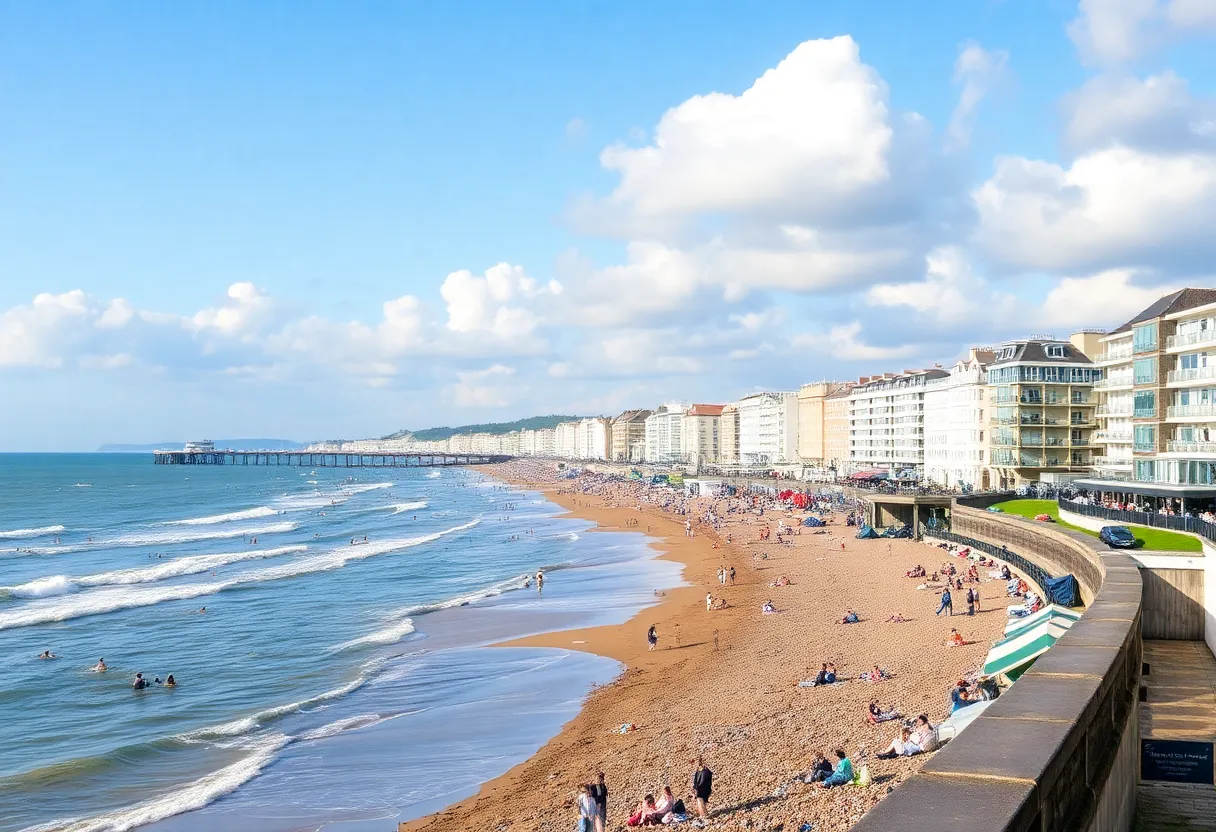News Summary
During the Georgian period, Brighton transformed from a fishing village into a thriving seaside resort, driven by the rise of medical tourism and the popular ‘Sea Cure.’ King George III’s experiences with sea bathing sparked interest among the elite, establishing Brighton as a premier destination for health and leisure. The ‘Sea Cure’ was promoted as a remedy for various ailments, leading to social customs and the commercialization of seaside vacations. This shift in public perception of the ocean from fear to therapeutic haven laid the groundwork for modern wellness trends.
Brighton Seaside Resorts Flourish as Medical Tourism Grows in Georgian England
Brighton has emerged as a thriving resort town during the Georgian period, driven by the increasing popularity of seaside accommodations for their health benefits. This transition from humble fishing lodgings to attractions noted for medical tourism signifies a significant cultural shift in 18th-century England. The dramatic rise of seaside resorts can be attributed to the advent of the ‘Sea Cure,’ a treatment regimen praised for its effectiveness against various ailments, including melancholia and even cancer.
King George III became one of the most notable patients of this burgeoning medical trend, contributing to its popularity and acceptance among the elite. His positive experiences with sea bathing in Weymouth further encouraged other members of royalty and aristocracy to visit seaside resorts, establishing a trend that would transform Brighton into a premier destination.
Health Benefits of the ‘Sea Cure’
The ‘Sea Cure’ asserted that the unique attributes of seawater and salt air could significantly improve health. Dr. Richard Russell played a pivotal role in this movement with his publication, A Dissertation on the Use of Sea Water, in 1750, where he suggested that sea bathing could remedy numerous conditions. Russell’s advocacy included the significance of salt, which he identified as essential to seawater’s healing properties, distinguishing it from common mineral waters.
In 1753, Russell established a seaside home to supervise the bathing process for his patients, attracting an affluent clientele. His influence, coupled with the growing belief in the health benefits of ocean air, transformed Brighton from a fishing village into an iconic resort town.
Changing Experiences in Bathing
Social customs evolved alongside the acceptance of seaside resorts. Bathing machines became popular among Georgian women, offering privacy by allowing them to change into bathing attire before entering the water. Conversely, men typically bathed nude, assisted by professionals known as “bathers.” Literary figures such as Jane Austen noted the allure of sea bathing, indicating its appeal transcended social boundaries. Austen’s cousin recorded health improvements that he experienced from winter bathing, reinforcing the therapeutic value attributed to this practice.
Commercialization and Leisure Growth
The expansion of leisure time in the flourishing British economy of the 18th century allowed more people to enjoy vacations by the sea. The rise of medical tourism helped commercialize seaside towns, with newspapers featuring advertisements for bathing facilities and accommodations tailored to visitors. By 1815, a guidebook had been published to assist tourists in navigating various seaside destinations, indicating the deepening interconnection between health and recreation.
Brighton notably became the first resort town favored by the aristocracy, with royal patrons such as the Duke of Marlborough frequently visiting. The shift in public perception of the ocean—from fear to therapeutic haven—occurred over time, influenced by voyages from explorers and literary works like Robinson Crusoe, published in 1719.
Continuing Legacy
As the Georgian era transitioned into the Victorian period, innovations such as bathing machines ensured continued modesty for women, marking an evolution in social and cultural practices surrounding seaside bathing. The legacy of the ‘Sea Cure’ remains relevant today, as contemporary wellness trends increasingly favor natural remedies and coastal retreats. The past serves as a reminder of the historical roots of the modern health and leisure industry, centered around the benefits of sea bathing.
In conclusion, Brighton’s transformation into a destination fluctuating between health and leisure underscores the sociocultural dynamics at play during the Georgian era. The popularization of the ‘Sea Cure’ not only altered the landscape of medical tourism but also laid the groundwork for the enduring allure of seaside resorts.
Deeper Dive: News & Info About This Topic
HERE Resources
Additional Resources
- History: Sea Cure Beach Resort
- Thrillist: Hysteric Women Sea Cure TikTok Trend
- Time Out: Best Brunch in Brighton
- Sky News: Police Seek Men After Assaults on Beach
- BBC News: Seaside Health Practices in History
- Wikipedia: Medical Tourism
- Encyclopedia Britannica: Seaside Resort
- Google Search: Brighton Seaside Resort History
- Google Scholar: Health Benefits of Sea Bathing
- Google News: Brighton Seaside News
Author: STAFF HERE CLEVELAND WRITER
The CLEVELAND STAFF WRITER represents the seasoned team at HERECleveland.com, your premier source for actionable local news and information in Cleveland, Cuyahoga County, and beyond, delivering "news you can use" with in-depth coverage of product reviews for personal and business needs, local business directories, politics, real estate trends, neighborhood insights, and state news impacting the region—backed by years of expert reporting and robust community input, including local press releases and business updates, while providing top reporting on high-profile events like the Rock and Roll Hall of Fame inductions, Cleveland International Film Festival, and holiday parades, alongside key organizations such as the Cleveland Clinic, Cleveland Orchestra, and Great Lakes Science Center, plus leading businesses in manufacturing and healthcare like Sherwin-Williams and University Hospitals, and as part of the broader HERE network including HEREDayton.com, offering comprehensive, credible insights into Ohio's vibrant landscape. HERE Cleveland HERE Dayton





